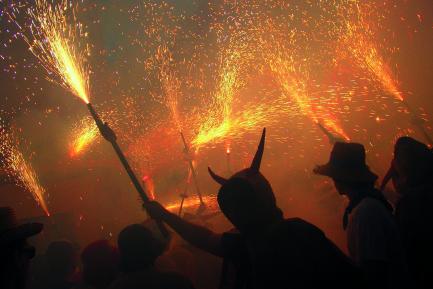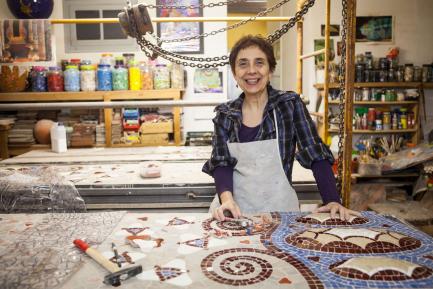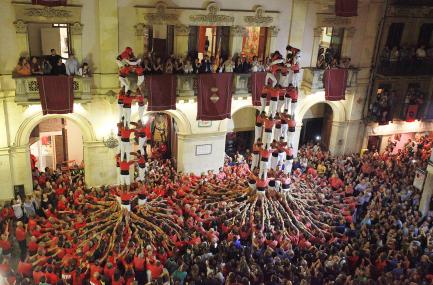Culture of Catalonia To Be Featured at 2018 Smithsonian Folklife Festival
Visitors to the 2018 Smithsonian Folklife Festival will have a unique opportunity to explore the diverse cultural expressions of Catalonia, a distinctive society in northeastern Spain. The 2018 Festival, which runs from June 27 to July 1 and July 4 to 8, will feature hundreds of artisans, designers, musicians and cooks from Catalonia, Armenia and other locations to highlight the importance of cultural heritage enterprise in the face of change.
Presented through 10 days of performances, workshops, demonstrations, participatory experiences and discussion sessions, the “Catalonia: Tradition and Creativity from the Mediterranean” program will focus on the bold creativity that has allowed the Catalan people to sustain the vitality of their distinctive regional culture. The program will allow visitors to learn about how Catalan communities have integrated festival arts, a network of cultural associations and community-based enterprise into their cultural sustainability efforts.
“Catalan culture thrives in public spaces—like plazas and public walkways, and annual festivals animate these spaces with impressive masquerades, astounding displays of fire and human towers that rise more than 30 feet into the air,” said Michael Atwood Mason, program co-curator and director of the Center for Folklife and Cultural Heritage. “We hope to share this vital street life, the sense of coexistence and respect for difference with American audiences.”
Visitors will explore this spirit of place and participation by taking part in festival arts, including constructing human towers with more than 100 people. While sampling fare from Festival concessions, visitors will learn about the revitalization of artisanal food and wine production across the region, as producers experiment with new methods and incorporate the social and cultural histories of their products into their marketing. Participants will explore how local cooperatives have built relationships into thriving businesses and share how the local Mediterranean diet has fed innovative gastronomy.
This participatory program will highlight how Catalans have creatively transformed a variety of traditional expressions to invigorate their economic and cultural life. As waves of immigrants have been welcomed into Catalonia throughout the past 90 years, their voices and artistic expressions have become part of the fabric of Catalan culture. Migrants from southern Spain brought flamenco music, which was essential to the emergence of the style known as rumba catalana. Immigrants and sailors carried rhythms from Cuba and helped forge the havaneres, a song style still celebrated in concerts each year. Visitors will also engage Catalan builders and craftspeople working in tile and stone, learning techniques and experimenting with arranging mosaics (trencadís) and stacking stone without mortar to construct walls (pedra seca).
Program partners include the Government of Catalonia’s Department of Popular Culture and Cultural Associations; the Provincial Governments of Barcelona, Girona, Lleida and Tarragona; the Fira Mediterrània de Manresa; the Institut Ramon Llull; and Adifolk: the Association for the Diffusion of Folklife.
About the Festival
The Smithsonian Folklife Festival, inaugurated in 1967, honors contemporary living cultural traditions and celebrates those who practice and sustain them. Produced annually by the Smithsonian’s Center for Folklife and Cultural Heritage in partnership with the National Park Service, the Festival has featured participants from all 50 states and more than 100 countries. Follow the Festival on Facebook, Twitter, Instagram and YouTube.
# # #
SI-281-2018







